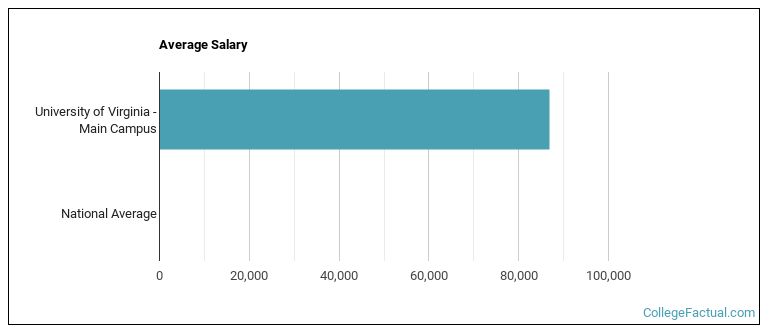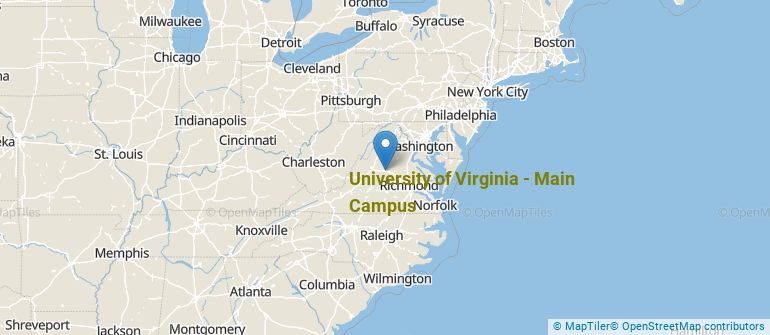 by our College Data Analytics Team
by our College Data Analytics Team
College Factual analyzes over 2,000 colleges and universities in its annual rankings and ranks them in a variety of ways, including most diverse, best overall quality, best for non-traditional students, and much more.
University of Virginia - Main Campus was awarded 130 badges in the 2025 rankings. The highest ranked major at the school is psychology.
Explore the best ranked schools for the programs you are most interested in.
University of Virginia landed the #35 spot in College Factual's 2025 ranking of best overall colleges in the United States. The higher ed experts analyzed 2,152 colleges and universities across the nation to determine this ranking. This lands it a coveted spot in the top 5% of all colleges and universities in the country.
University of Virginia also holds the #1 spot on the Best Colleges in Virginia ranking.
See all of the rankings for University of Virginia - Main Campus.
University of Virginia - Main Campus has a very low acceptance rate of 19%, making it one of the most selective out of all the colleges and universities in the nation. It's probably a good idea to apply to other schools in addition to University of Virginia just in case you don't make the cut.
About 50% of students accepted to University of Virginia submitted their SAT scores. When looking at the 25th through the 75th percentile, SAT Evidence-Based Reading and Writing scores ranged between 690 and 750. Math scores were between 710 and 790.
Learn more about University of Virginia - Main Campus admissions.
The student to faculty ratio at University of Virginia - Main Campus is about average at 15 to 1. This ratio is often used to gauge how many students might be in an average class and how much time professors will have to spend with their students on an individual level. The national average for this metric is 15 to 1.
Another measure that is often used to estimate how much access students will have to their professors is how many faculty members are full-time. The idea here is that part-time faculty tend to spend less time on campus, so they may not be as available to students as full-timers.
The full-time faculty percentage at University of Virginia - Main Campus is 96%. This is higher than the national average of 47%.
University of Virginia - Main Campus has a freshmen retention rate of 97%. That's a good sign that full-time students like the school and their professors enough to want to stick around for another year. It's also a sign that the admissions team did a good job in choosing applicants who were a good fit for the school.
Students are considered to have graduated on time if they finish their studies within four years. At University of Virginia the on-time graduation rate of first-time, full-time students is 89%. That is great when compared to the national average of 33.3%
Find out more about the retention and graduation rates at University of Virginia - Main Campus.
During the 2017-2018 academic year, there were 17,310 undergraduates at University of Virginia with 16,319 being full-time and 991 being part-time.
| $0-30 K | $30K-48K | $48-75 | $75-110K | $110K + |
|---|---|---|---|---|
| $11,273 | $12,720 | $14,884 | $23,840 | $32,829 |
The net price is calculated by adding tuition, room, board and other costs and subtracting financial aid.Note that the net price is typically less than the published for a school. For more information on the sticker price of University of Virginia, see our tuition and fees and room and board pages.
It's not uncommon for college students to take out loans to pay for school. In fact, almost 66% of students nationwide depend at least partially on loans. At University of Virginia, approximately 22% of students took out student loans averaging $8,639 a year. That adds up to $34,556 over four years for those students.
Get more details about paying for University of Virginia - Main Campus.

See which majors at University of Virginia - Main Campus make the most money.
Get more details about the location of University of Virginia - Main Campus.

Contact details for University of Virginia are given below.
| Contact Details | |
|---|---|
| Address: | 1827 University Avenue, Charlottesville, VA 22903-2628 |
| Phone: | 434-924-0311 |
| Website: | https://www.virginia.edu/ |
| Most Popular Majors | Bachelor’s Degrees | Average Salary of Graduates |
|---|---|---|
| Liberal Arts General Studies | 1,247 | NA |
| Criminal Justice & Corrections | 693 | NA |
| Business Administration & Management | 592 | NA |
| Management Sciences & Quantitative Methods | 567 | $93,565 |
| Economics | 483 | $74,958 |
| General Biology | 348 | $23,395 |
| Law | 327 | NA |
| Computer Information Systems | 295 | $98,067 |
| Nursing | 286 | $75,220 |
| General Psychology | 285 | $36,121 |
Online learning is becoming popular at even the oldest colleges and universities in the United States. Not only are online classes great for returning adults with busy schedules, they are also frequented by a growing number of traditional students.
In 2022-2023, 2,483 students took at least one online class at University of Virginia - Main Campus. This is a decrease from the 6,235 students who took online classes the previous year.
| Year | Took at Least One Online Class | Took All Classes Online |
|---|---|---|
| 2022-2023 | 2,483 | 1,038 |
| 2021-2022 | 6,235 | 2,060 |
| 2020-2021 | 23,498 | 13,297 |
| 2018-2019 | 2,483 | 1,038 |
Learn more about online learning at University of Virginia - Main Campus.
If you’re considering University of Virginia - Main Campus, here are some more schools you may be interested in knowing more about.
Curious on how these schools stack up against University of Virginia? Pit them head to head with College Combat, our free interactive tool that lets you compare college on the features that matter most to you!
Footnotes
*The racial-ethnic minorities count is calculated by taking the total number of students and subtracting white students, international students, and students whose race/ethnicity was unknown. This number is then divided by the total number of students at the school to obtain the racial-ethnic minorities percentage.
References
More about our data sources and methodologies.